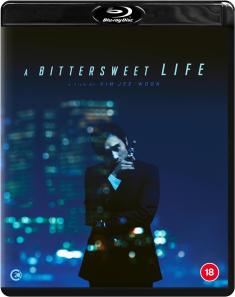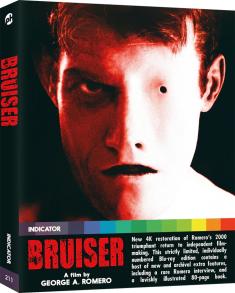VIZIO SB46514-F6 46-Inch 5.1.4 Dolby Atmos Sound Bar System
Overview -Overview -- The VIZIO SB46514-F6 46-Inch 5.1.4 Dolby Atmos Sound Bar System features a 46-inch sound bar unit with two up-firing drivers, two rear satellite speakers with up-firing drivers, and a wireless 10-inch subwoofer -- offering a robust Dolby Atmos experience that feels more like a full-fledged home theater setup than a "sound bar" package. Unfortunately, though an update is in the works, a current limitation causes the rear heights to simply play the same content as the front heights, preventing genuine 5.1.4 playback. Likewise, the system does not offer DTS:X decoding. Still, even with some flaws, this is one of the most powerful and enveloping sound bar systems I've ever heard. The current lack of discrete front and rear heights is disappointing, but under the assumption that an update is coming, the overall package remains Recommended.
Update 4/24/19: With the release of firmware V1.10.15.1, VIZIO has now added support for discrete front and back height channels, allowing the system to deliver true 5.1.4 audio, resulting in an even more impressive experience. The score has now been upgraded from a 4 to a 4.5 to reflect the upgraded performance and the product has now earned our Editor's Choice badge. Scroll down to the performance section to read some updated thoughts on the sound bar's 5.1.4 Atmos playback. Highly Recommended.
Intro
After reviewing VIZIO's impressive SB36512-F6 5.1.2-Channel Sound Bar system, I wondered how much of an upgrade its more expensive 46-inch 5.1.4 model could provide. Well, after getting my hands on the unit, the answer is… quite a bit!
With a beefier and more cohesive subwoofer, larger sound bar unit, and added satellite up-firing drivers, this Dolby Atmos Sound Bar package really does hold its own against some entry-level standalone speaker/receiver configurations -- offering a more affordable and convenient immersive audio solution without ever making it feel like you're sacrificing performance.
But are the improvements here really worth double the MSRP of the 36-inch 5.1.2 model? Well, that might depend on your priorities... so let's break it down!
Specs & Design
The VIZIO SB46514-F6 features a 46-inch 3-channel sound bar unit with 2 additional up-firing drivers, a wireless 10-inch subwoofer, and two satellite speaker units with their own up-firing drivers. An HDMI cable, 3.5mm audio cable, digital optical cable, stereo RCA to 3.5mm audio cable, power cords, satellite speaker wires, two wall mount brackets with wall mount screws, and a wall mount template are also included. In addition, a click button remote control with a small but handy LCD text screen rounds out the package.
Visually, the sound bar features a similar but more refined style compared to its smaller SB36512-F6 sibling, with a standard but attractive look marked by a simple rectangular shape with a predominantly black finish. But unlike the 36-inch model, this version swaps out the cloth speaker grill for a non-removable hard-casing -- giving the unit a cleaner, industrial look. An array of LED indicators is housed on the front left side which can flash to signify changes to volume, settings, signal type, and input selection. In addition, the top of the sound bar includes buttons for power, input, Bluetooth, and volume. Meanwhile, the satellites and subwoofer both feature a complementary industrial aesthetic with a black and silver color scheme.

The sound bar unit measures 46.00" x 2.52" x 3.34", while the subwoofer comes in at 14.00" x 15.00" x 14.00", and each surround speaker is 3.00" x 6.52" x 2.67". With its low profile, the sound bar offers flexible placement options and should fit easily in front of most TVs. With that said, the subwoofer here is relatively large and does take up a bit more room than VIZIO's typical models, losing some of the system's space-saving appeal. Thankfully, what the sub lacks in convenience it more than makes up for in performance.
Under the hood, the sound bar features a left tweeter and mid-bass driver with neodymium magnets and passive radiator; a left height upward-firing mid-bass driver with neodymium magnets; a center tweeter and mid-bass driver with neodymium magnets and bass port; a right height upward-firing mid-bass driver with neodymium magnets; and a right front tweeter and mid-bass driver with neodymium magnets and passive radiator.
Meanwhile, the surround satellite each feature a front-facing full-range driver with neodymium magnets and an upward-firing full-range driver with neodymium magnets. In addition, the wireless Subwoofer uses a 10" woofer and a bass reflex ported enclosure. As a whole, the system is rated for a frequency Response of 20 Hz to 20 kHz and a Sound Pressure Level of 108 dBSPL.

The back of the sound bar unit includes a section for power, AUX, and optical ports on the left side, and another section with an HDMI ARC output, HDMI input, Ethernet port, and USB port on the right side. Thankfully, as a very welcomed upgrade over last year's models, the HDMI input does now include support for 4K HDR and Dolby Vision passthrough. Wireless Bluetooth and 802.11n Wi-Fi connectivity are supported as well.
Likewise, the system offers Dolby Atmos, Dolby TrueHD, Dolby Digital Plus, DTS-HD MA, and DTS decoding capabilities (lossless formats via HDMI from a connected Blu-ray player). And if users prefer to disable the up-firing drivers, the device also supports DTS Virtual:X up-mixing to simulate surround sound and height effects. With that said, the system does not include DTS:X decoding -- though DTS:X tracks can be played back in native DTS-HD MA 5.1 or upmixed with height channels.
Setup & SmartCast
After unpacking the device, setup is basically the same as other VIZIO SmartCast sound bars. With that said, I do have to note that my initial review unit had some issues with the sound bar's left front driver and the output levels for the rear left height channel. Thankfully, VIZIO was able to send a replacement system without any issues.
For wired playback, users simply need to plug in the sound bar and subwoofer's power cables, and then run the included audio cables from the satellite speakers to the subwoofer (they're long enough to satiate most users' needs). Once turned on, the sub will automatically pair with the sound bar.
From there, customers can hook up the included HDMI cable from the sound bar to their TV's ARC port. An additional HDMI device can also be plugged into the unit's video passthrough input as well.
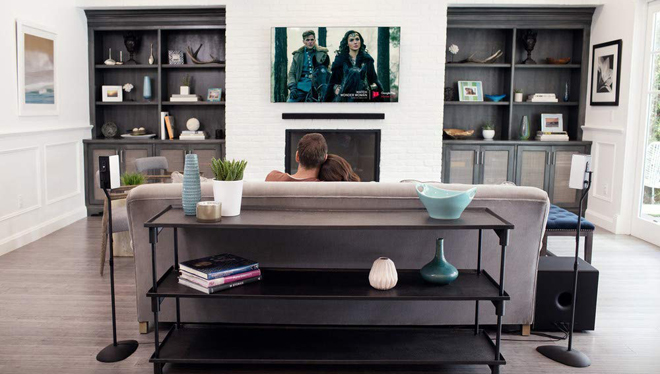
Meanwhile, to get the most out of the sound bar's wireless playback capabilities, customers will need to download the SmartCast mobile app for iOS or Android. Once installed, the app can then be used to discover the sound bar and pair it with a user's Wi-Fi connection, enabling casting support for Chromecast-enabled music streaming services like Spotify, Google Play Music, Pandora, iHeartRadio, and more.
iHeartRadio stations are accessible directly through the SmartCast app itself, while most other services require users to boot up their individual apps. Once playback is started through a service like Spotify, however, customers can opt to return to the SmartCast app to control songs and see track info there.
But while I eventually got wireless playback to work, for whatever reason, the app would repeatedly have trouble discovering the sound bar over my Wi-Fi. I've had some similar problems with other wireless platforms like DTS Play-Fi, and it's come to my attention that there might be an issue with my router that's causing the device to disappear from the app. Either way, when discoverable, wireless playback worked well, allowing me to cast streaming music and locally stored MP3s files from various apps on my phone to the sound bar.
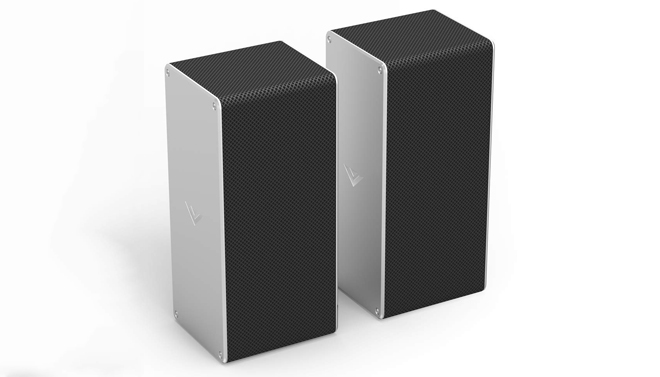
In addition to streaming support, the app also offers access to an extensive selection of audio settings (also available via the included remote), allowing users to adjust the sound bar's bass, treble, balance, and volume. But though center and surround volume can be set individually, the system sadly does not offer separate volume control for the height channels. Meanwhile, the app and remote also offer the ability to select different EQ modes, including Direct, Movie, and Music.
On other VIZIO sound bars, I've generally preferred to use the Direct mode for most of my listening as this setting seems to properly play Dolby Atmos, surround sound, and stereo soundtracks with their native number of channels (no up-mixing). For whatever reason, however, I found that the Direct Mode on this model would initially prevent the rear height speakers from engaging in Dolby Atmos content. Oddly, switching from Direct to another mode and then back to Direct would suddenly trigger the rear heights on.
I'm not sure why this cycling was necessary, but for that reason, I preferred to use Movie Mode since it didn’t have this problem. The Movie and Music modes are also capable of up-mixing 2.0 and 5.1 sources to 5.1.4. In that regard, both modes do a solid job of expanding the soundfield with rear and height placement.
Performance
For this review, I sampled a variety of Dolby Atmos 4K Ultra HD Blu-ray and streaming titles in lossless TrueHD or lossy Dolby Digital Plus, including Mission: Impossible – Fallout, The Meg, The Matrix, Blade Runner 2049, Jupiter Ascending, Justice League, and more. Likewise, I also listened to several clips from Dolby Atmos and DTS demo discs.
Before going any further, I think it's important to elaborate on one key limitation I discovered. Though the rear satellites do include up-firing drivers, the system does not currently output discrete rear height channels. Here's what VIZIO had to say about the issue when I contacted them:
“The height channels currently meet Dolby’s original specifications for a 5.1.4 sound bar system, which only provides separate left and right height channels; the rear height channels play the same content as the front channels. Dolby has since updated the specification and VIZIO is working to implement the update sometime in the 1st quarter of 2019 for both existing and future SB46514-F6 customers."
Though this current limitation is disappointing and important for consumers to be aware of, even with the same content being played through the front and back heights, the rear heights still definitely helped to create a more convincing sense of overhead audio, bolstering the up-firing effect. In comparison, I found the reflected audio to be noticeably more effective with this system than the 36-inch model without rear heights.
Update 4/24/19: When it originally shipped, the sound bar and its satellites were not capable of discrete front and back height channels. Instead, the front height effects were simply mirrored on the back speakers. With the system's latest firmware update, however, this limitation has been removed, offering true discrete front left, front right, back left, and back right height channels. This was confirmed by running a 5.1.4 Dolby Atmos test tone demo.
I also re-sampled several demo clips and scenes from a variety of Atmos films, including Spider-Man: Homecoming, Jumanji: Welcome to the Jungle, and Wonder Woman. Throughout all the clips, the added discrete rear heights allowed for a more varied and enveloping soundscape, enabling overhead sounds to now pan from front to back. A crashing helicopter in the Jumanji clip was especially impressive, sending the sound of the spinning rotor above the listening position in all directions with smooth imaging.
For all intents and purposes, my previous impressions included below also still stand -- just keep in mind that Atmos performance is now even more engaging thanks to the update.
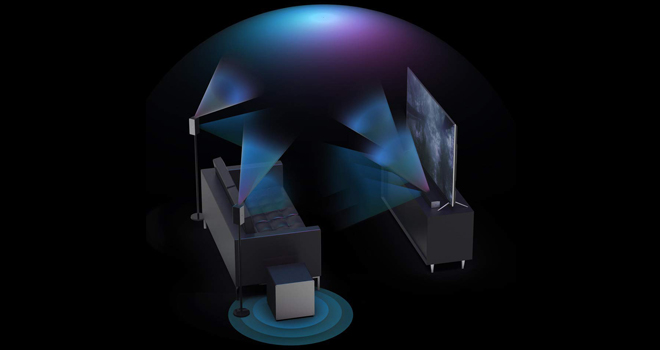
Impressions from before the V1.10.15.1 update:
Dolby Atmos titles like The Meg and Mission: Impossible Fallout came through with immersive audio from all directions. The Meg, in particular, offered some very convincing overhead effects thanks to the four up-firing drivers, reflecting the sound of creaking metal, flowing water, hovering helicopters, and computer voices off of the ceiling.
Falling rain in Blade Runner 2049 and The Matrix also proved to be a great showcase for the Atmos feature. Likewise, a Dolby demo with shattered glass pouring from above also brought a realistic sense of overhead audio.
Of course, just like other up-firing speakers I've heard, the effect could still be hit or miss, but several tricky scenes, like a sequence in Jupiter Ascending with a computer voice, worked a bit better here than on the 36-inch model. This might simply mean that the placement of the rear speakers in my room just works better for reflecting sound off of my particular ceiling than the front speakers -- but either way, I was impressed by the effect.
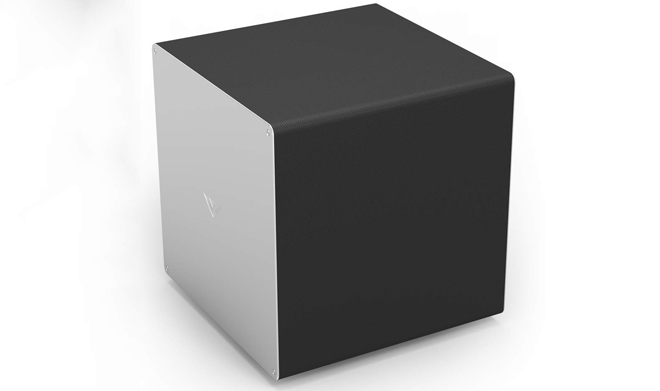
Likewise, the 10-inch subwoofer included here provides a truly impressive kick, offering a much more notable improvement over other VIZIO models than I was expecting. Avoiding the boomy sound that I've encountered in previous systems, the subwoofer here offers a deep and cohesive punch capable of bringing room-shaking LFE without losing accuracy and balance, always feeling like a natural extension of the system as a whole. In fact, this is one of the first sound bar subwoofers I've heard that really comes across like a genuine home theater sub.
Together, the up-firing drivers, subwoofer, and sound bar unit all worked together to create a very enveloping surround sound experience with all the content I watched, making me forget that I was listening to a "sound bar" system.
And beyond native Atmos tracks, I also sampled the system's up-mixing capabilities with standard surround and stereo mixes, including Lost in Space, Bird Box, The Ballad of Buster Scruggs, and Riverdale. Overhead sounds were not as convincing in non-native Atmos material, but certain effects like a space ship overhead, fluttering birds, and several music cues did get expanded nicely.
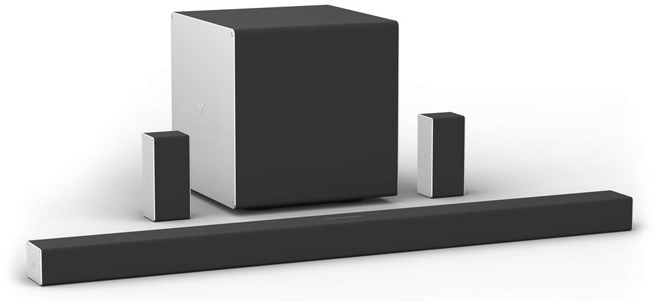
Outside of movies and TV shows, I listened to a variety of streaming tracks and MP3s through the SmartCast platform as well, along with some songs via a Bluetooth connection from my Galaxy S7 smartphone, including material from Arcade Fire, Radiohead, Arianna Grande, Nicki Minaj, and more.
Performance was very similar to the 36-inch model I recently reviewed, though the larger sound bar and subwoofer did bring a bit more oomph and a wider soundstage to the music. Likewise, the sonics seemed to be a bit less bright here, and I actually ended up preferring the Atmos expansion Music Mode provided over standard stereo playback in many instances, as it offered a pleasingly spacious and enveloping dome of sound.
Final Thoughts
Pros
- Immersive 5.1.4 Dolby Atmos performance
- Lossless Dolby TrueHD and DTS-HD MA support
- HDMI 4K HDR10/Dolby Vision pass-through
- Bluetooth and Wi-Fi music streaming
- Robust 10-inch wireless subwoofer
Cons
- Front and rear height channels not discrete (update in the works)
- No DTS:X support
- Up-firing effect can be hit or miss
- SmartCast platform can be glitchy with some connections
Offering key upgrades over the company's already impressive 36-inch model, the VIZIO SB46514-F6 46-Inch 5.1.4 Dolby Atmos Sound Bar System packs quite a punch. To be honest, I wouldn't even really consider this a "sound bar" package. It's really just a great entry-level Dolby Atmos system, offering an immersive home theater experience for less than most speaker/receiver combos.
With that said, the lack of discrete front and rear height support right now is disappointing. I can't fault VIZIO for relying on Dolby's earlier spec, but a 5.1.4 system really should offer genuine 5.1.4 output. Hopefully, the company will release its planned update soon -- and once that happens, the value here will become even more impressive.
As it stands, the larger sound bar unit, beefier subwoofer, and additional up-firing drivers do still justify a bigger price tag over the company's 36-inch 5.1.2 model, but without true rear height channels, I'm just not completely convinced the improvements are worth double the price.
Assuming the system receives a true 5.1.4 update, the SB46514-F6 would easily earn a 4.5 and come Highly Recommended. Until then, I'm going to have to bump the score down half a star. But even with its current limitation, this is still one of the most impressive sound bar systems I've heard.
And with the system's latest firmware update, the sound bar now offers true discrete front and rear height channels. Really, the sound bar's only major remaining downside is its lack of DTS:X support. But outside of that single limitation, this really is one of the absolute best 5.1.4 Dolby Atmos sound systems in this price range, offering home theater fans a fantastic entry-level immersive audio option.
Highly Recommended.






